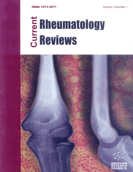
Abstract
Objective: To investigate injection site pain (ISP) and other injection site outcomes caused by biologics administered alongside citrate-free (CF) and citrate-containing (CC) formulations.
Methods: Electronic literature databases (Medline, Embase, and Cochrane Library) were systematically searched for clinical trials and observational studies reporting on injection site outcomes after subcutaneous administration of biologics. Studies with unknown excipient formulations were excluded. The primary outcome was ISP, and secondary outcomes included any other reported injection site reactions (ISRs). Meta-analysis approaches were used to aggregate evidence identified via the conducted systematic literature review.
Results: A total of two observational studies, two cross-over/sequential trials, and three head-tohead comparison trials directly comparing CF with CC biologics were identified, as well as seven placebo-controlled trials. Evidence from five of the seven direct comparison studies suggested reduced pain perception at the injection site when CF formulations were applied. Findings for other ISRs were balanced between both formulations, with slightly favorable results for preparations without citrate. A meta-analysis of placebo-controlled trials found no significant difference between arms with CF formulations and placebo regarding the proportion of patients experiencing ISP (OR 0.62, 95% CI 0.30-1.28).
Conclusion: Excipient formulations are rarely specified in studies assessing pain and other ISRs of subcutaneously administered biologics. The available data indicate that subcutaneous administration of biologic agents without citrate may be associated with lower pain perception outcomes compared with treatment using CC formulations. Importantly, ISP is influenced by many factors which may have affected the results. More research is needed to assess how formulation excipients influence ISRs.
Keywords: Biologics, citrate, excipient, formulation, injection site pain, injection site reaction.
[http://dx.doi.org/10.1007/978-3-319-66884-0_12]
[http://dx.doi.org/10.1136/pgmj.2006.052688]
[http://dx.doi.org/10.3748/wjg.v20.i29.9675]
[http://dx.doi.org/10.3390/ijms18112297]
[http://dx.doi.org/10.1002/acr.22783]
[http://dx.doi.org/10.1136/annrheumdis-2016-210459]
[http://dx.doi.org/10.1080/14712598.2018.1421169]
[http://dx.doi.org/10.1002/9780470571224.pse521]
[PMID: 14719195]
[http://dx.doi.org/10.1007/s13555-019-00341-2] [PMID: 31734937]
[http://dx.doi.org/10.1002/art.20217] [PMID: 15146409]
[http://dx.doi.org/10.2147/tcrm.2007.3.1.133] [PMID: 18360621]
[http://dx.doi.org/10.1136/ard.2003.013052]
[http://dx.doi.org/10.1002/art.10697]
[http://dx.doi.org/10.1111/dom.12304]
[http://dx.doi.org/10.1186/1471-2377-8-38] [PMID: 18845005]
[http://dx.doi.org/10.1111/j.1742-7843.2006.pto_271.x] [PMID: 16445598]
[http://dx.doi.org/10.1093/ecco-jcc/jjx180.1046]
[http://dx.doi.org/10.1080/14397595.2018.1520426] [PMID: 30183438]
[http://dx.doi.org/10.1136/ejhpharm-2018-eahpconf.246]
[http://dx.doi.org/10.1007/s40744-016-0041-3] [PMID: 27747583]
[http://dx.doi.org/10.1016/S0140-6736(15)60125-8] [PMID: 26072109]
[http://dx.doi.org/10.1093/ecco-jcc/jjx180.624]
[http://dx.doi.org/10.1002/art.37711] [PMID: 23169319]
[http://dx.doi.org/10.1136/annrheumdis-2012-202450] [PMID: 23234647]
[http://dx.doi.org/10.1136/annrheumdis-2012-201601] [PMID: 22730366]
[http://dx.doi.org/10.1097/RHU.0000000000000276] [PMID: 26203826]
[http://dx.doi.org/10.1111/bjd.14493] [PMID: 26914406]
[http://dx.doi.org/10.1016/j.cgh.2011.04.031] [PMID: 21642014]
[http://dx.doi.org/10.1136/rmdopen-2019-000900] [PMID: 31245050]
[http://dx.doi.org/10.1002/art.24638] [PMID: 19644849]
[http://dx.doi.org/10.1007/s11095-021-03047-3] [PMID: 33942212]
[http://dx.doi.org/10.1007/s11095-021-03075-z] [PMID: 34244893]
[http://dx.doi.org/10.1523/JNEUROSCI.2087-20.2021] [PMID: 33888605]
[http://dx.doi.org/10.1007/s12325-019-01101-6] [PMID: 31587143]










